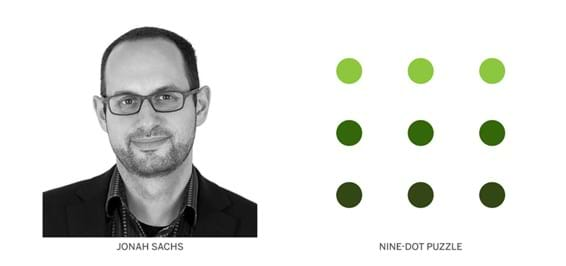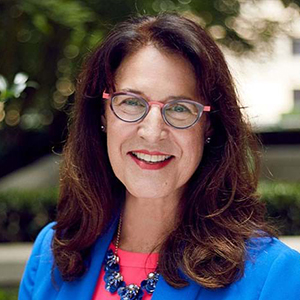
The Power of ... Unsafe Thinking?
Challenge and Change in the Global Workplace
Do you know where the phrase “thinking outside the box” comes from? It has its roots in what many people call the “nine-dot puzzle” — actually a labyrinth-style game made famous more than 100 years ago by the puzzle master Sam Loyd. It’s pretty straightforward: You draw a 3 x 3 grid of dots and then try to connect them, using only straight lines, without lifting pen from paper. It won’t take you long to find that the best solutions require lines that stretch beyond the boundaries of your grid — thinking outside the box, in other words. (Loyd called the puzzle “Christopher Columbus’ Egg Trick,” but “thinking beyond Christopher Columbus’ eggs” doesn’t really have the same ring to it.)
When you think about the phrase in this context — when you have a clear picture of what the box is, what’s inside it, and what’s not — it can actually be pretty useful. And as far as I’m concerned, this is the real lesson of “thinking outside the box”: The box matters, too. Everywhere, context is key.

I was thinking about all this last week, when author Jonah Sachs visited our office to talk to our global leadership team about his brand-new book, “Unsafe Thinking: How to be Nimble and Bold When You Need It Most.” In his book, Sachs argues that safe thinking is the opposite of creative thinking, and that discomfort is the surest route to positive change. He told us the same thing we tell our clients: that in a world of constant motion, companies can’t afford to shy away from big, bold action. We all need to find ways to take big swings, celebrate challenges, and embrace disruption. We all need to think outside the box.
But we also need to remember that not every box is the same. So, the question is: How can we harness the power of unsafe thinking in a marketplace that’s truly global? How can we apply Sachs’s lessons cross-culturally, so that everyone on our team and everyone we work with feels heard, respected and in sync?
Unsafe thinking in a global marketplace
In the past three years, WE has made a huge push to become a truly global company. To me, that means more than just doing business outside the United States. It also means cultivating a global mindset: understanding the regions, markets and cultures in which we’re communicating and working to apply and integrate that understanding into everything we do.
But some of the strategies Sachs suggests to encourage unsafe thinking — like encouraging rule-breaking in order to enhance creativity and refine processes, or replacing “niceness” with respect — run counter to prevailing norms and values in many places around the world.
The challenge now is to translate Sachs’s concepts into strategies that work not just in theory, but also in context. One thing is for certain: Creative rule-breaking won’t look the same in Canada as it looks in China. “Niceness culture” manifests differently in Indonesia and Indiana, Singapore and Spain. Our task is to lead from where we are: to work within cross-cultural communication paradigms and to find ways to think more expansively about what the goals of “unsafe thinking” really ought to be.
And I think we’ll find that sometimes, the best and most creative solutions are staring us right in the face — just like Sam Loyd’s puzzle.
The path forward
So: Does being culturally responsive, and culturally responsible, mean we can’t also pursue the boundary-shattering benefits of unsafe thinking? Absolutely not. On the contrary, working alongside our teammates and clients to translate “thinking outside the box” into the local language — metaphorically speaking, of course — is exactly the kind of unsafe thinking Jonah Sachs writes about. It will force us to understand our own biases and limitations; think creatively about how and why we choose to break the rules (and which rules we choose to break); and find common ground with our partners on which we can build, together. In our case, that means we always start with context — and if we do that right, we will effectively lead clients to the most impactful communications outcomes.
Ultimately, I think Sachs is right: Unsafe thinking means better thinking, and unsafe leadership means better leadership. That’s true anywhere you go, from New York to Nepal. But there’s more than one way to be “unsafe” — and it’s our job to figure out the best way, to match our strategy to our context, to decide which boxes are worth preserving and which ones need upending. That is how we’ll build a company that truly does transcend Christopher Columbus’ eggs.
Read more posts from WE Global CEO and Founder Melissa Waggener Zorkin here.
Follow Melissa on LinkedIn and Twitter.
Photo of Jonah Sachs Attribute: Free Range
The latest blogs from WE
Decoding Gen Alpha: A Primer on the Next Gen of Consumers
Why Gen Alpha Will Fuel Spending This Season
Why Reputation Is a Business Driver in Healthcare


